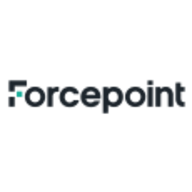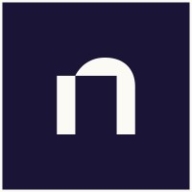


Forcepoint Data Loss Prevention and Netwrix Endpoint Protector compete in the data protection category. Forcepoint appears to have the upper hand due to its advanced features and technology integration.
Features: Forcepoint Data Loss Prevention provides endpoint protection, network discovery, and cloud integration with technologies like optical character recognition and custom encryption identification. Netwrix Endpoint Protector offers content-aware protection and device control, efficiently supporting macOS and Windows environments with role-based access features.
Room for Improvement: Forcepoint users seek enhanced data classification, improved non-English language support, and AI integration. Netwrix Endpoint Protector could use better policy customization and improved Linux support, and it also lacks advanced network-level DLP components.
Ease of Deployment and Customer Service: Forcepoint offers various deployment options but is sometimes viewed as complex to implement, with inconsistent regional support. Netwrix Endpoint Protector is praised for straightforward installation in hybrid environments with generally positive customer support.
Pricing and ROI: Forcepoint is more expensive, reflecting its advanced features and market leadership, and is often a better fit for larger enterprises. Netwrix Endpoint Protector is cost-effective, offering essential DLP functions appealing to budget-conscious buyers.
WordPress security can be tricky, and that's where Cloudflare can be absolutely helpful for small businesses.
For the small project I was working on, using the basic tier provided a huge improvement at zero cost.
In terms of return on investment with Cloudflare, it costs my time to set them up, but basically once they're set up, it's done.
This would help us address issues promptly, especially during unforeseen events like DDoS attacks.
Cloudflare does not offer hands-on technical support to fix customer problems but rather a self-service model.
The key factor is the language in which the support is offered, which, in this case, is in Thai.
They conduct sessions to check logs and policies, unlike Symantec, where engineers may temporarily check and ask for logs, causing delays.
I would rate the technical support for Netwrix Endpoint Protector as a nine because we have trained engineers, and I am also trained.
I never needed to contact the vendor for technical support because we faced very few issues.
It is a SaaS tool, but the fact that they have workloads deployed across the world proves that it is a highly scalable tool.
The tool offers very good performance, even during high-traffic periods.
I rate the solution’s scalability an eight out of ten.
The key principle of a scalable DLP uses a single policy engine across multiple data channels such as endpoint, email, web, cloud, and network.
Everything starts from the endpoint, and we maintain the Endpoint DLP in many cases while working alongside existing DLP systems.
This solution is scalable because prior to onboarding it, we took references from the vendor, the implementation vendor, and the CoSoSys team.
For DDoS protection, I would not recommend Cloudflare.
I rate the solution’s stability an eight out of ten.
The service is very stable with no impacts during high-traffic periods.
The stability of Forcepoint Data Loss Prevention is reliable, with minimum crashes, errors, or performance issues.
The product has been around for over 15 years now and is very stable because I started using them from version three.
Stability-wise, the solution is stable; we experienced no downtimes during our two years of usage.
There's a need for improvement in areas like AI-based DDoS attacks and Layer 7 WAF features.
Despite these challenges, overall, Cloudflare remains the preferred solution compared to Azure, AWS CloudFront, and Google Cloud Armor.
The timing aspect can lead to it being considered overpriced. This is a particular concern we have with Cloudflare, as they may struggle with accurately detecting the client.
While Forcepoint is mostly on-premises, I suggest that to compete with Symantec, they should consider cloud solutions.
Improvement in Forcepoint Data Loss Prevention, especially when applying a positive DLP approach, needs to focus on decreasing false positive incidents.
Netwrix is known as the best DLP for Apple Macintosh computers, which is noteworthy.
Not all the policies applied to the Linux clients were as effective as those for Mac and Windows.
That's where Cloudflare shines for smaller businesses – it's ten times cheaper than Akamai.
I find it to be cheap.
I think they should consider reevaluating the pricing for support, as it can be quite high.
The pricing is reasonable and medium, not very low, but fair for the product offered.
The most valuable features of the solution are performance and security.
Techniques like minification and image compression reduce the size of assets, leading to better performance and faster user load times.
The solution has been able to compare it to the market, and I think the product has taken great strides in automating quite a bit of things, and they use a lot of AI.
It provides multiple customization options for policies, which makes it superior to Symantec.
It supports 50 file types and continuously improves accuracy with user feedback, enabling auto-discovery across cloud, endpoint, and on-premises data stores without extra cost of repeated scans.
Assuming if there's a breach, we will be able to know exactly where the breach has occurred and what has occurred, and they are quite granular in how they report their information, including their logs.
Netwrix Endpoint Protector works on Linux and macOS to block USB ports, control internet access, and manage other peripheral ports.
License utilization was a concern as when we were changing the hostname from asset category to asset tag and from personal hostnames to asset tags, it started taking multiple licenses.



| Company Size | Count |
|---|---|
| Small Business | 46 |
| Midsize Enterprise | 8 |
| Large Enterprise | 25 |
| Company Size | Count |
|---|---|
| Small Business | 30 |
| Midsize Enterprise | 6 |
| Large Enterprise | 27 |
| Company Size | Count |
|---|---|
| Small Business | 15 |
| Midsize Enterprise | 9 |
| Large Enterprise | 6 |
Cloudflare is a highly-regarded Content Delivery Network (CDN) and a Distributed Denial-of-Service (DDoS) protection solution. The robust global connectivity cloud platform that is Cloudflare ensures users are able to connect to the Internet quickly, securely, and reliably. Cloudflare is one of the world's largest networks in the marketplace today. Using Cloudflare, businesses, educational entities, NGOs, vloggers, bloggers, and anyone else with an internet presence can experience more secure, faster websites and applications.
Currently, there are millions of Internet locations on Cloudflare, and the Cloudflare network
continues to grow every day by the thousands. The solution is able to fulfill the requests for
millions of websites seamlessly and serves on average 45 million HTTP requests per second.
Cloudflare has safe, secure data centers in close to 300 cities worldwide to ensure every
client request is filled as quickly as possible. It is Cloudflare’s edge network that makes this
possible by keeping content and other services as close to each client as possible, so the
information requests are always only seconds away.
Many organizations that work in democracy, civil society, human rights, or the arts are able to
access Cloudflare's highest levels of protection for free via Project Galileo. Additionally, official
election websites can be secured from hacking and fraud through Cloudflare’s Project
Athenian, also at no additional cost.
Cloudflare can also help organizations of all sizes develop a robust zero-trust strategy to
ensure the highest levels of productivity and profitability. Employees, stakeholders, and end users have a greater level of satisfaction and overall improved user experience, which can, in
turn, result in higher revenues and overall ROI. Zero-trust and BYOD (bring your own device)
access ensure end users and employees always have the best resources and technology
available to them at all times.
Cloudflare benefits
Cloudflare has many benefits. Some of its most valuable benefits include:
- Faster load times
- Robust DNS security
- Intuitive cloud Web Application Firewall (WAF)
- Free universal SSL
- Image enhancement
- Automatic browser caching
- Next-generation cloud load balancer
- Accelerated Mobile Pages (AMP)
- Rate limiting
- Minification
- Zero-trust capabilities
- Cost-effective
- Reduced carbon footprint
Reviews from real users
“Many websites require an SSL certificate because they sell stuff and want SSL. Cloudflare
comes with an SSL certificate built in. It's automatic. You sign yourself up for Cloudflare, and
an SSL certificate automatically protects your website. If you have a connection between your
website and your host, the server, Cloudflare, and the host, you don't necessarily need a
certificate.” Spencer M., Owner at Tech Exchange
“What I like best about Cloudflare is that my company can use it to trace and manage
applications and monitor traffic. The solution tells you if there's a spike in traffic. Cloudflare
also sends you a link to check your equipment and deployment and track it through peering,
so it's a valuable tool.” Daniel P., Network Engineer at Ufinet
“The most valuable feature of Cloudflare is the GUI. You are able to control the solution very
well through the interface. There is a lot of functionality that is embedded in the service.” PeerSpot user, Competence Center Manager at a tech services company
Forcepoint Data Loss Prevention offers comprehensive data protection with strong template support, seamless cloud integration, and detailed reporting. It ensures data security through extensive endpoint, network, and server-level controls.
Forcepoint Data Loss Prevention is equipped with advanced fingerprinting technology, optical character recognition, and a large library of predefined rules. Organizations gain comprehensive data visibility and effective policy enforcement, supported by dynamic user behavior analysis and compliance capabilities. Its intuitive interface and flexible deployment options position it as a top choice for data security, although it could improve in communication reliability and language support. Complex reporting, machine learning integration, and cross-platform compatibility require enhancements.
What are the key features of Forcepoint Data Loss Prevention?Forcepoint Data Loss Prevention is utilized extensively in industries like finance and law to protect sensitive information from unauthorized transfers. It secures enterprise legal documents, financial assets, and personal data, employing features such as OCR to safeguard data across network, email, and cloud channels.
Content Aware Protection
Scanning data in motion
Monitor, control and block file transfers. Detailed control through both content and context inspection.
Device Control
USB & peripheral port control
Lockdown, monitor and manage devices. Granular control based on Vendor ID, Product ID, Serial Number and more.
Enforced Encryption
Automatic USB encryption
Encrypt, manage and secure USB storage devices by safeguarding data in transit. Password-based, easy to use and very efficient.
eDiscovery
Scanning data at rest
Discover, encrypt and delete sensitive data. Detailed content and context inspection through manual or automatic scans
We monitor all Data Loss Prevention (DLP) reviews to prevent fraudulent reviews and keep review quality high. We do not post reviews by company employees or direct competitors. We validate each review for authenticity via cross-reference with LinkedIn, and personal follow-up with the reviewer when necessary.